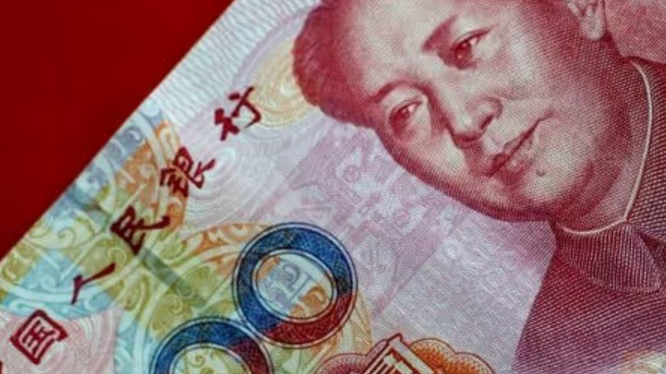SHANGHAI- China’s yuan weakened past a key threshold to the lowest level in more than a year against the dollar on Tuesday, pressured by the widening yield gap between the world’s two largest economies and US President-elect Donald Trump’s renewed tariff threats.
The offshore yuan breached the psychologically important 7.3 per dollar level, while its onshore counterpart also traded just pips away from the key point, despite a persistently firmer-than-expected official guidance.
Monetary policy divergence between China and United States has sharpened in recent weeks as investors bet that Beijing will deliver more easing to support the economy, pulling the 10-year yield down to the lowest point on record this week.
Moreover, Trump’s threat of tariffs has kept the Chinese currency under pressure for weeks.
“CNH continued to trade under pressure amid expectations for further rate cuts at home while the economic recovery remains uneven,” analysts at OCBC Bank said in a note.
“US tariffs can further hurt RMB … Recent tariff headlines served as a constant reminder that wider tariffs could soon hit when Trump comes on board officially in Jan-2025.”
Prior to the market’s opening, the People’s Bank of China (PBOC) set the midpoint rate around which the yuan is allowed to trade in a 2 percent band, at 7.1996 per dollar, its weakest since Sept. 11, 2023 and 706 pips firmer than a Reuters’ estimate of 7.2702.
The central bank has been setting the official guidance rate in an extremely tight range on the firmer side of the important 7.2 per dollar level over the past few weeks, effectively putting 7.35 as a floor for spot trades.
The offshore yuan traded at 7.3079 per dollar, after hitting a trough of 7.3145, the weakest level since Nov. 3, 2023.
Its onshore counterpart was 0.3 percent lower at 7.2958 after falling to as low as 7.2996.
The central bank appears to “allow more depreciation in spot yuan given heavy tariffs will kick in next year,” said Ken Cheung, chief Asian FX strategist at Mizuho Bank.
“The central bank might want to front load and release some depreciation pressure,” Cheung said.
The dollar’s six-currency index was 0.14 percent higher at 106.52 around midday.
Meanwhile, China’s chip-making stocks shrugged off the latest US clampdown to notch small gains on Tuesday, but financials dragged on the broader market as falling interest rates are expected to squeeze insurers’ returns and lenders’ margins.
The United States on Monday launched its third crackdown in three years on China’s semiconductor industry, curbing exports to 140 companies to stymie China’s ability to access and produce top-line chips.
“It was not a blanket ban, or as stringent as people first feared. So that, to me, is a positive,” said Tai Hui, Asia chief market strategist at J.P. Morgan Asset Management in Hong Kong.
“That said, I think we’ve seen in the past few years, things get tighter and tighter.”
Mainland indexes of global chipmakers and chip-making materials firms climbed around 2 percent, while designers and even toolmaker Piotech one of the companies newly targeted by the US rose around 1 percent.
The broader Shanghai Composite blue chip CSI300 and Hong Kong’s Hang Seng all fell around 0.5 percent.
In addition to having become more inured to US crackdowns after years of restrictions, investors in China’s semiconductor industry see targeted firms as likely to garner state support or, at least, earn revenue that would otherwise have flowed to global giants. The broader market was weighed down by a gloomy economic outlook for China that has investors expecting further interest rate cuts, underlined by a weak reading for non-manufacturing spending.





